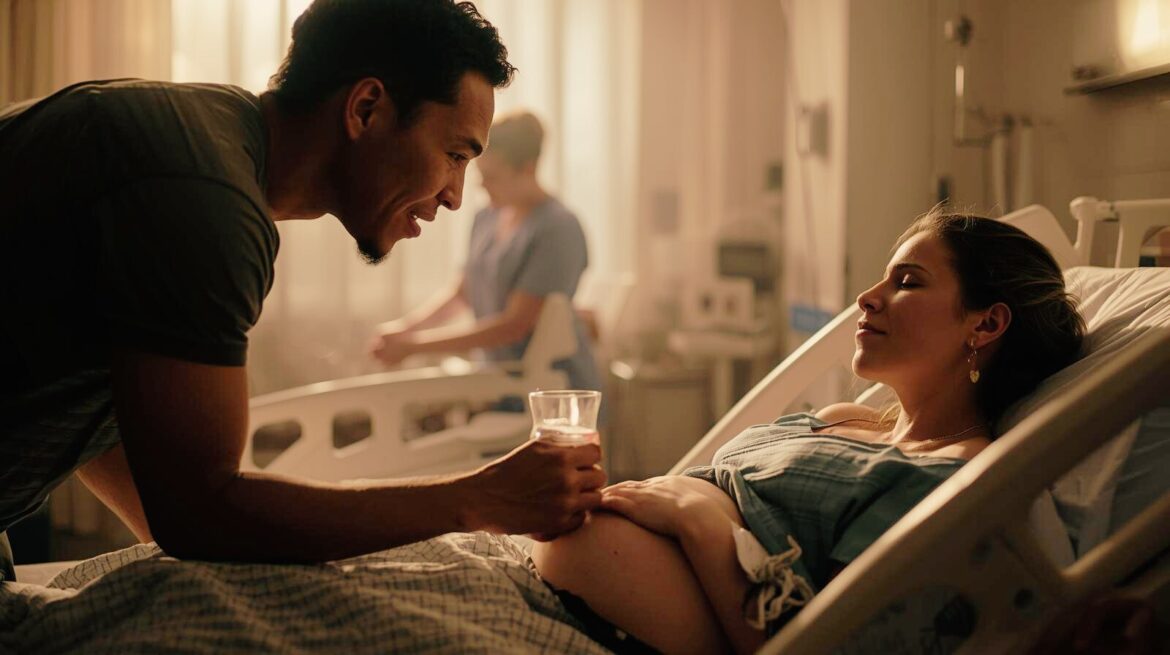
Table of Contents
When you’re expecting a baby, it seems like everyone has an opinion about how you should give birth. Friends, family, and even strangers may share stories that sound more like cautionary tales than helpful advice. Some will insist that a natural birth is the “right” way, while others may say a C-section is easier or safer. With so much information — and misinformation — floating around, it’s easy to feel overwhelmed.
The truth is, both natural birth and C-section are safe, valid options when guided by medical advice and personal circumstances. Every pregnancy is unique, and what’s right for one parent may not be right for another. Unfortunately, myths about childbirth can create unnecessary fear, guilt, or pressure during a time that should be focused on preparing for your baby.
In this blog, we’ll explore the most common myths surrounding natural birth vs. C-section, clear up misconceptions, and highlight what really matters when making your decision. By the end, you’ll feel more confident having open conversations with your doctor and partner about the path that’s best for you.

The Big Picture — Natural Birth vs. C-Section
When it comes to childbirth, there are two main delivery methods: natural birth (vaginal delivery) and cesarean section (C-section). Both have been practiced for generations, and both can be safe when medically appropriate.
- Natural birth: Refers to delivering the baby through the birth canal. It can involve pain management techniques (like epidurals) or be unmedicated, depending on the mother’s preferences and medical situation.
- C-section: A surgical procedure where the baby is delivered through incisions in the abdomen and uterus. It’s often recommended when vaginal delivery may be unsafe for the mother or baby.
Many myths around natural birth vs. C-section arise from cultural expectations, personal stories, or fear of the unknown. Let’s break down some of the most common myths to separate fact from fiction.
Common Myths About Natural Birth
Myth 1: Natural birth is always the safest option
It’s true that natural birth is safe for many women, but it’s not universally the best choice. Conditions like placenta previa, breech presentation, or fetal distress may make a C-section the safer route. The key is not assuming one option is always safer but trusting medical guidance for your specific situation.
Myth 2: Natural birth means no pain relief
“Natural” doesn’t mean you’re left to endure pain without help. Options include:
- Epidurals for targeted pain relief
- Nitrous oxide (“laughing gas”) to take the edge off contractions
- Breathing and relaxation techniques for support
Pain relief doesn’t make your birth “less natural.” It’s simply a tool to make the process more manageable.
Myth 3: Recovery from natural birth is always easier
Many people recover quickly from vaginal delivery, but that isn’t everyone’s story. Some women experience:
- Perineal tearing or stitches
- Pelvic floor weakness
- Emotional recovery challenges
Recovery time varies, and no two experiences are alike.
Myth 4: Choosing natural birth means rejecting modern medicine
Some assume that opting for a vaginal delivery means refusing medical help. In reality, many parents combine natural approaches (like mobility, birthing positions, or minimal intervention) with modern tools like monitoring, IV fluids, or an epidural. Choosing natural birth doesn’t mean choosing “no medicine” — it means tailoring your birth plan to your needs.
Common Myths About C-Section
Myth 1: C-sections are the “easy way out”
This couldn’t be further from the truth. A C-section is major surgery that involves anesthesia, an incision, and a recovery period that often lasts longer than vaginal delivery recovery. While C-sections can be life-saving, they are by no means “easy.” Every form of birth comes with its own challenges.
Myth 2: Mothers who have C-sections can’t bond with their baby
Bonding isn’t about how your baby enters the world. Skin-to-skin contact, breastfeeding, or simply holding your baby close are all possible after a C-section. Hospitals and care teams are increasingly supportive of immediate bonding, even in surgical settings.
Myth 3: Once a C-section, always a C-section
While some women will need repeat C-sections, many can safely attempt a VBAC (Vaginal Birth After Cesarean). Doctors assess factors like uterine health, type of incision, and overall pregnancy health before recommending VBAC. For some mothers, a successful VBAC is a positive and empowering option. Learn more in this article.
Myth 4: C-sections are riskier than natural birth
Both C-sections and vaginal deliveries carry risks. For some pregnancies, a C-section actually reduces risk by preventing complications. For others, vaginal delivery may be recommended. What matters most is choosing the safest option in your specific situation with the guidance of your care team.
Factors to Consider When Deciding
Every pregnancy is unique, which means the choice between natural birth and C-section isn’t one-size-fits-all. Instead of clinging to myths, focus on what matters most: safety, health, and personal comfort.
Here are some factors to weigh:
- Medical considerations: gestational diabetes, placenta previa, breech position, high blood pressure, or previous surgeries.
- History: past birth experiences, including prior C-sections and recovery outcomes.
- Hospital policies: what pain relief options, VBAC programs, or birthing resources are available.
- Personal preferences: comfort with medical intervention, pain management choices, and emotional needs.
- Support systems: having your partner, doula, or family involved in your decision-making and recovery.
The most important step? Discuss your birth plan with your doctor and your partner. Birth plans should be flexible, but they serve as a helpful starting point for understanding your wishes and preparing for different scenarios.
At the end of the day, there’s no “right” or “wrong” way to give birth. Both natural birth and C-section are safe, valid options when chosen with the guidance of your doctor and support from your partner. Myths can cloud judgment, but facts — and open conversations — help you feel empowered. Remember, every birth story is unique, and what matters most is a healthy outcome for both parent and baby.
Have you heard myths about natural birth or C-sections that surprised you? Share your thoughts in the comments below — your story could help another expecting parent feel less alone. And if you’d like more reassuring, fact-based insights on pregnancy and parenting, subscribe to our blog for future posts.
Check out our website for more tips and information about motherhood.


